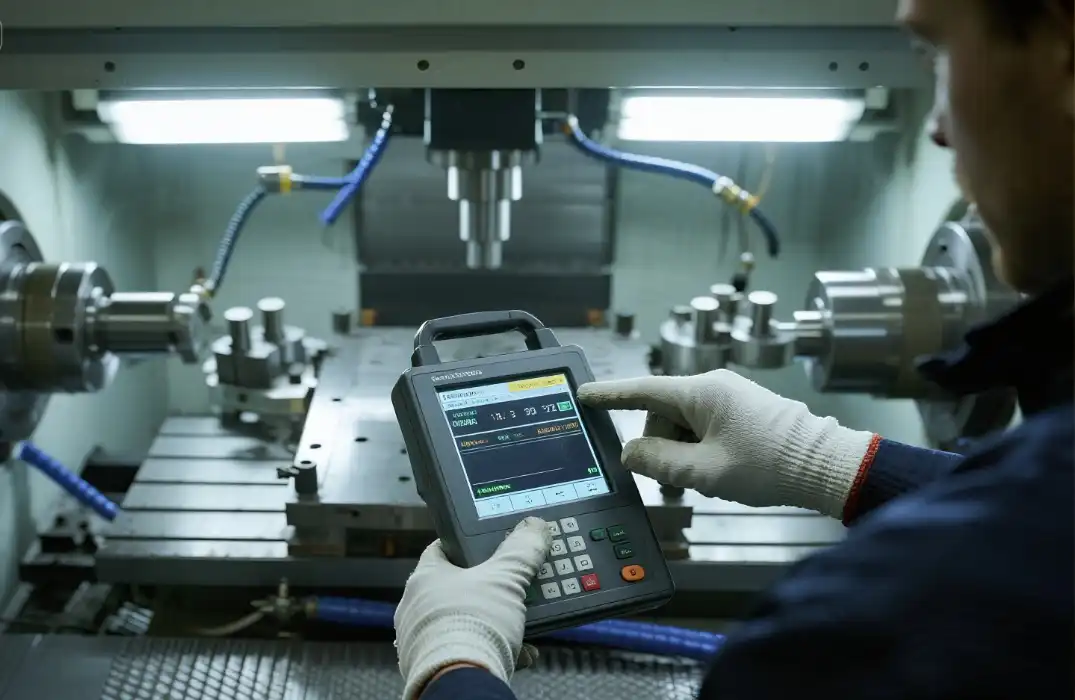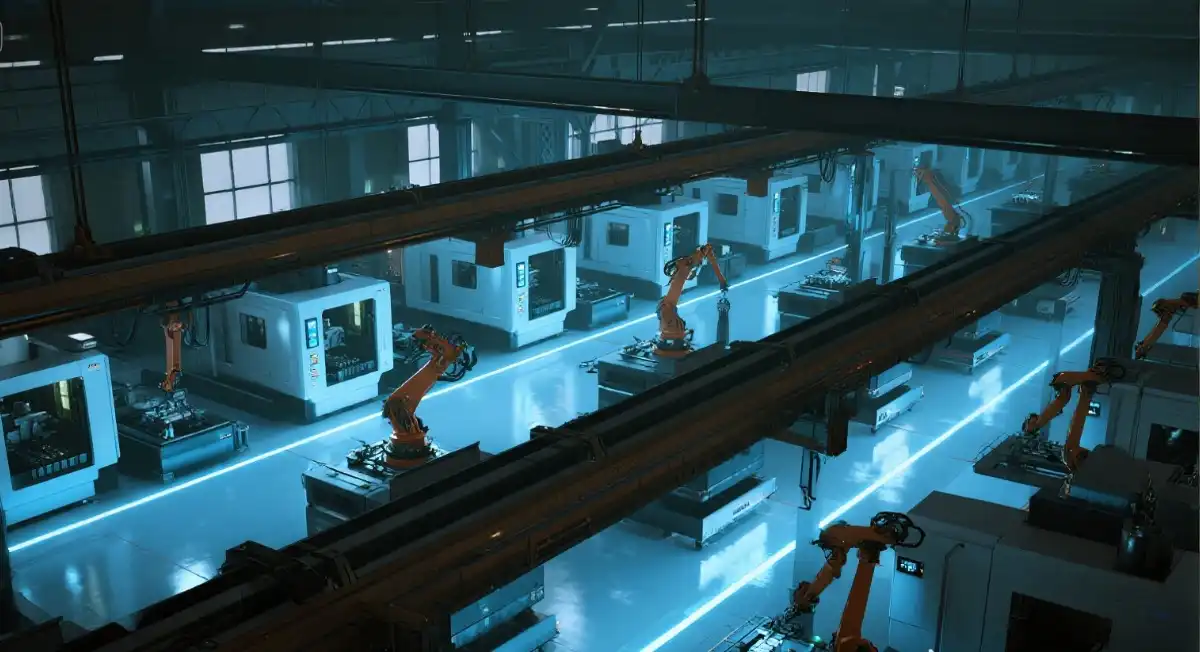What Is CNC Turning in Metalworking? A Detailed Guide?
CNC turning is a sophisticated metalworking process that revolutionizes precision manufacturing. This computer-controlled technique involves rotating a workpiece while a cutting tool removes material to create intricate shapes and components. Ideal for producing cylindrical parts with high accuracy, CNC turning offers unparalleled efficiency in metalworking. From aerospace components to medical devices, this versatile method enables the creation of complex geometries with tight tolerances. In this comprehensive guide, we'll explore the intricacies of CNC turning, its applications, and why it's become an indispensable tool in modern manufacturing.
The Fundamentals of CNC Turning
Understanding the CNC Turning Process
CNC turning is a fundamental subtractive manufacturing method where material is precisely removed from a rotating workpiece using a computer-controlled lathe. The cutting tool follows a programmed path along two linear axes to achieve highly accurate dimensions and smooth surface finishes. This versatile process efficiently produces cylindrical components such as shafts, bushings, and connectors. It supports the creation of diverse external and internal geometries, including grooves, threads, tapers, and complex profiles. By automating operations, CNC turning ensures repeatability, reduces human error, and is widely utilized in high-volume production across industries like automotive, aerospace, and medical device manufacturing.
Key Components of CNC Turning Machines
A modern CNC turning center consists of several integral components that work together to ensure precision and efficiency. The spindle, driven by an electric motor, rotates the workpiece at variable speeds. A programmable turret holds multiple cutting tools and indexes them as needed for different operations. The machine’s control unit executes G-code instructions generated from CAD/CAM software, coordinating movements along the X and Z axes with extreme accuracy. Additional advanced elements, such as live tooling—which enables milling and drilling—and a sub-spindle for back-working, significantly expand machining capabilities, allowing complete processing in a single setup.

Materials Suitable for CNC Turning
CNC turning is compatible with an extensive variety of materials, offering flexibility in part design and functionality. Commonly machined metals include aluminum, brass, stainless steel, titanium, and alloy steels, each selected based on mechanical properties such as tensile strength, hardness, and thermal resistance. Engineering plastics like PEEK, nylon, and ABS are also frequently turned for lightweight or corrosion-resistant applications. The material choice directly impacts tool selection, cutting speeds, and coolant use. With appropriate tool coatings and coolants, even challenging materials like superalloys or composites can be machined effectively to meet strict tolerances and surface quality requirements.
Advantages and Applications of CNC Turning
Benefits of CNC Turning in Manufacturing
CNC turning offers numerous advantages over traditional machining methods. It provides exceptional accuracy and repeatability, crucial for high-volume production. The automated process reduces human error and labor costs while increasing productivity. Complex parts can be manufactured quickly and consistently, meeting stringent quality standards across industries.
Industries Leveraging CNC Turning
Various sectors rely on CNC turning for critical components. The aerospace industry uses it for turbine parts and structural elements. Automotive manufacturers produce engine components and drivetrain parts. Medical device companies create implants and surgical instruments. Electronics firms utilize CNC turning for connectors and heat sinks. The versatility of this process makes it indispensable across diverse fields.

Comparing CNC Turning to Other Machining Methods
While CNC milling excels at creating flat surfaces and complex 3D shapes, CNC turning is optimized for cylindrical parts. Turning often achieves faster material removal rates for round components. However, hybrid machines now combine turning and milling capabilities, offering the best of both worlds. The choice between processes depends on part geometry, production volume, and specific requirements.
Advanced Techniques and Future Trends in CNC Turning
Multi-Axis Turning and Live Tooling
Advanced CNC turning centers now incorporate multi-axis capabilities and live tooling. These features allow for milling operations to be performed on the same machine, reducing setup time and improving accuracy. Y-axis turning enables off-center milling and drilling, expanding the range of possible part geometries. This integration of turning and milling functionalities boosts productivity and part complexity.
Automation and Industry 4.0 Integration
The future of CNC turning lies in increased automation and integration with Industry 4.0 principles. Robotic systems for part loading and unloading minimize human intervention. Machine learning algorithms optimize cutting parameters in real-time, improving efficiency and tool life. Digital twin technology enables virtual simulation and process optimization before physical production begins, reducing waste and improving outcomes.

Sustainable Practices in CNC Turning
Sustainability is becoming a key focus in CNC turning operations. Advanced coolant systems recycle and filter cutting fluids, reducing environmental impact. Energy-efficient machines and optimized toolpaths minimize power consumption. Manufacturers are exploring ways to recycle metal chips and reduce material waste. These green initiatives not only benefit the environment but also improve cost-effectiveness in the long run.
Conclusion
CNC turning stands as a cornerstone of modern metalworking, offering unparalleled precision, efficiency, and versatility. From its fundamental principles to advanced applications across industries, this technology continues to evolve, pushing the boundaries of manufacturing capabilities. As we look to the future, innovations in multi-axis machining, automation, and sustainability promise to further enhance the role of CNC turning in producing the complex components that drive our technological world.
FAQs
What materials can be used in CNC turning?
CNC turning can work with a wide range of materials, including metals like stainless steel, aluminum, brass, and copper, as well as plastics such as ABS, POM, and PEEK.
How does CNC turning differ from CNC milling?
While CNC turning rotates the workpiece against a stationary cutting tool, CNC milling uses a rotating cutting tool on a stationary workpiece. Turning is ideal for cylindrical parts, while milling excels at flat surfaces and complex 3D shapes.
What industries commonly use CNC turning?
CNC turning is widely used in aerospace, automotive, medical device manufacturing, electronics, and general engineering industries for producing precision parts.
Expert CNC Turning Services | BOEN
At BOEN, we specialize in high-precision CNC turning for prototypes and low-volume production. Our state-of-the-art machinery and expert technicians ensure top-quality results for even the most complex parts. From material selection to surface finishing, we offer comprehensive solutions tailored to your specific needs. Experience the BOEN difference in CNC turning excellence. Contact us at contact@boenrapid.com to discuss your next project.
References
1. Smith, J. (2022). Advanced CNC Turning Techniques for Precision Manufacturing. Journal of Manufacturing Technology, 45(3), 78-92.
2. Johnson, M. R. (2021). The Evolution of CNC Turning in Aerospace Applications. Aerospace Engineering Review, 33(2), 112-128.
3. Williams, S. A., & Brown, T. L. (2023). Sustainability Practices in Modern CNC Machining. Green Manufacturing Quarterly, 18(1), 45-60.
4. Lee, H. K. (2020). Multi-Axis CNC Turning: Capabilities and Challenges. International Journal of Machine Tools and Manufacture, 159, 103615.
5. Garcia, R. P., & Martinez, L. A. (2022). Industry 4.0 Integration in CNC Turning Operations. Smart Manufacturing Systems, 7(4), 301-315.
6. Thompson, E. J. (2021). Materials Science in CNC Turning: Optimizing Cutting Parameters for Various Alloys. Journal of Materials Processing Technology, 298, 117324.

How Can We Help?

Your Trusted Partner in Rapid Manufacturing.



